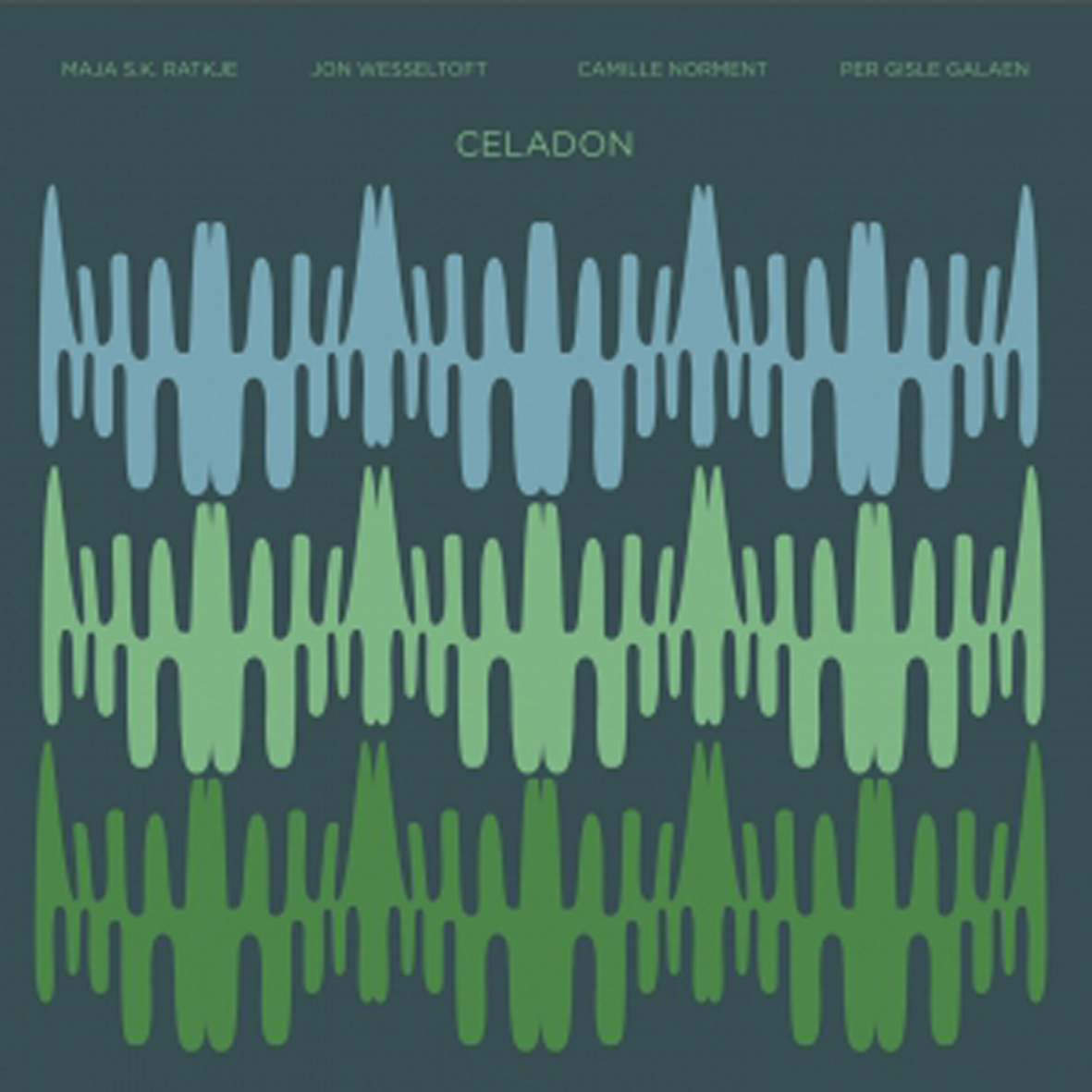 I am not particularly familiar with any of the four artists involved in this unexpectedly audacious and unique album, but Celadon is definitely a kindred spirit to Important's previous iconoclastic, raga-influenced drone epics by Catherine Christer Hennix.  Charlemagne Palestine is yet another artist that unavoidably springs to mind, but favorably so: while this album is anything but derivative, Maja Ratkje and her collaborators share his willingness to take drone music into some very dissonant, uncategorizable, and cathartic territory.  Put more bluntly: Celadon is probably not for the average drone fan, as Ratkje's vocals gradually build to an almost demonic, window-rattling intensity, but it is nevertheless a bold, striking, and deceptively ferocious artistic statement that is like absolutely nothing else that I have heard.
I am not particularly familiar with any of the four artists involved in this unexpectedly audacious and unique album, but Celadon is definitely a kindred spirit to Important's previous iconoclastic, raga-influenced drone epics by Catherine Christer Hennix.  Charlemagne Palestine is yet another artist that unavoidably springs to mind, but favorably so: while this album is anything but derivative, Maja Ratkje and her collaborators share his willingness to take drone music into some very dissonant, uncategorizable, and cathartic territory.  Put more bluntly: Celadon is probably not for the average drone fan, as Ratkje's vocals gradually build to an almost demonic, window-rattling intensity, but it is nevertheless a bold, striking, and deceptively ferocious artistic statement that is like absolutely nothing else that I have heard.
There are a number of curious elements to Celadon and not all of them have ready explanations.  For one, I have no idea how these four musicians are interconnected or how they all wound up together recording an album in this vein this amidst the fabled acoustics of Norway's Emanuel Vigeland Mausoleum.  Yet another idiosyncrasy is the unusual choice of instrumentation, particularly Camille Norment's glass armonica, which I do not think I have ever heard so prominently on an album before (if ever).  Consisting of a series of glass bowls or goblets played with finger friction, Norment's armonica provides a haunting, hazy, and eerie backdrop throughout Celadon.  In fact, the opening "Beneath the Bough" largely feels like a stark duet between just the bleary shimmer of rubbed glass and Ratkje's chant-like, quasi-ritualistic vocals.  Wesseltoft and Galåen admittedly contribute some gently buzzing textures via harmonium and zither, but their presence does not truly come to the fore until the following "The Green Flood."
Initially, the lengthier "The Green Flood" just feels like more of the same, but as it progresses, it becomes clear that the album is slowly building into something considerably more daring and ambitious than its opening suggested.  The transformation is far from forced though: Celadon is primarily a languorously swaying reverie for much of its duration, keeping the music extremely minimal and spacious and allowing its darker underbelly to only surface slowly and organically through subtly massing islands of dissonance. By its halfway point, however, it is clear that "Flood" has sneakily become quite heavy, cohering into a dense miasma of uneasily harmonizing harmonium drones while Ratkje’s previously sedate vocals occasionally break into clear, banshee-like wails.  Initially, her trips into the upper registers maintain an operatic level of control and force, adding a welcome power and unpredictability to the piece.  On the final piece, however, the remaining thin veneer of mannered artifice is gutsily torn down, transforming those same soaring and angelic vocal crescendos into something positively feral-sounding.
"Afterglow" is initially quite similar to its predecessors, however, despite being a bit darker and more ominous right out of the gate.  That said, no amount of uneasily harmonizing drone thrum could have possibly prepared me for Maja’s blood-chilling howl that occurs around the six-minute mark.  From that point on, Celadon has far transcended its somewhat subdued and humble origins for good and we are in uncharted territory to stay.  Wisely, the vocals pyrotechnics do not continue unbroken, but any sense of calm is decisively shattered: while the quartet intermittently fade back into a smoldering equilibrium, there is always the threat that Ratkje will again erupt into something resembling a shrieking exorcism or menacingly low-register Tuvan throat-singing.  Such a performance would probably give me an instant headache in most other hands, but it does not here: the visceral explosiveness of Ratkje's vocals is certainly startling, extreme, and intense, but it feels more like a tour de force performance by an insanely gifted performer rather than a more modest talent pushing herself beyond her capabilities with reckless abandon.  Also, it not only fits the surrounding music, it elevates it into something rather amazing and otherworldly.
If Celadon has any flaws, they are definitely minor ones–mainly that it gets off to a fairly slow start and takes a long time to distinguish itself as a radical departure from more traditional drone.  Those somewhat meandering, improvisatory traits ultimately work in its favor though, making the explosive crescendo that much more stunning and satisfying.  Obviously, Maja Ratkj'’s almost-supernatural performance deserves a huge amount of credit for making this such a wonderful album, but the entire ensemble worked beautifully together.  While I was personally most enamored of Norment's glass armonica, all four musicians seamlessly cohered to form an egoless and dynamically simmering backdrop without a single misstep or false-move.   This is a genuinely prodigious achievement. I have absolutely no idea what I would even call this genre (Outsider drone? Pandit Pran Nath-damaged minimalism?), but I am certain that Celadon has decisively earned a place within its pantheon of classics.
Samples:
 
Read More

